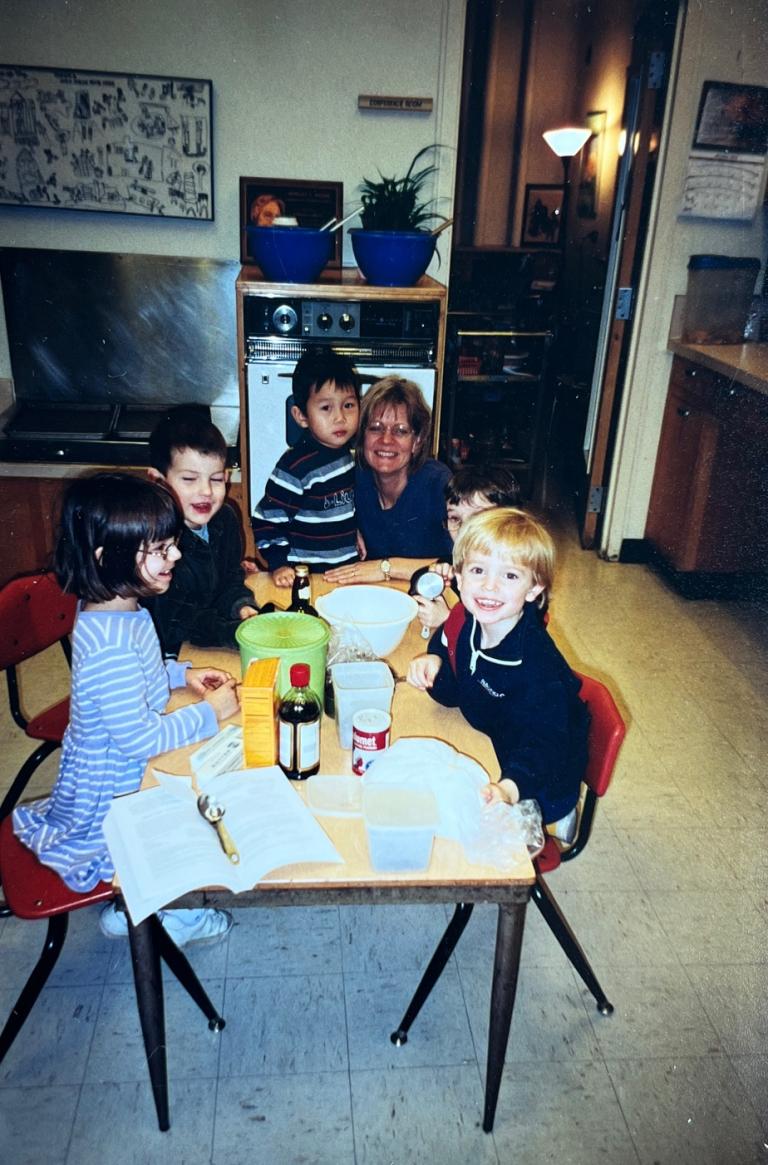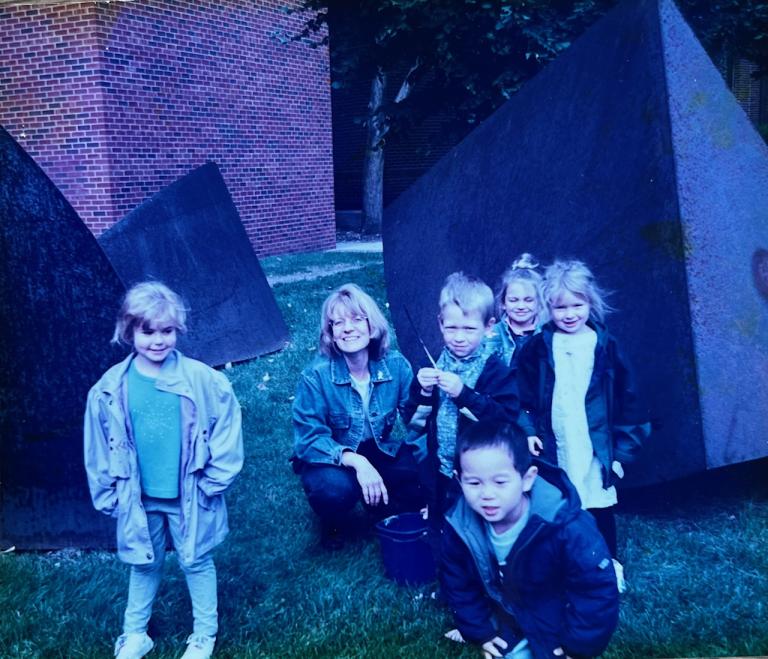News
Celebrating Ann Ruhl Carlson's 32 years of service
After 32 years of service at ICD, Ann Ruhl Carlson will retire this June from her current position as the Early Childhood Licensure Coordinator. Ann started at the University of Minnesota in 1992 and worked in the Shirley G. Moore Laboratory School (now known as the Child Development Laboratory School) for 15 years before moving to an academic professional role in the department. Her many roles throughout her tenure have included student teaching placement supervisor, course instructor, Lab School enrollment coordinator, undergraduate and graduate student advisor, and licensure coordinator.
Because of Ann’s work, the Early Childhood Education Program in ICD is often highlighted as a model licensure program by the Office of Teacher Education. She said also feels good about being part of the evolution of the program, and how we currently offer various degree options for students at the undergraduate and graduate level. Ann shared how the early childhood program has changed over the years and a few of her fondest memories with us.
Tell us how your career in early childhood education began and how you ended up at the Shirley G. Moore Lab School in ICD.
I went through elementary education for my undergrad degree and finished in the late 70s. I was teaching for a couple of years and started getting interested in early childhood education, but I didn’t have that preparation. I started the process of getting an early childhood teaching license here at the University, and when I took that first developmental psychology class, it all fell together. We have to understand children developmentally first.
I worked as a teacher and then preschool director at the St. David’s Early Childhood Center before coming back to the U to start working on my master’s degree in early childhood education. I had done my student teaching at the Shirley G. Moore Lab School and I remember thinking it would be the best job in the world. When a student position opened up teaching in the afternoon class, I applied and was hired by the then-director Lynn Galle. I moved into a permanent teaching position in the school when I finished my graduate degree.
What were your favorite parts about working at the Shirley G. Moore Lab School?
In terms of curriculum, we were very play-based with a primary focus on social-emotional development. The staff was small and we worked closely together. This was also before a lot of today’s current safety restrictions, so professors and students in ICD could just walk through to ask questions and visit. It was very open.
The rooms were huge and had good light, but they were dated. They had big steam pipe heaters and it could get really hot in the room. The kids would come in and strip off their clothes! I loved the small playground along the River Road and would use that all summer as an outdoor classroom. On the big playground, there was a riverbed with a handpump where the children would have to work together to pump the water and collect it in buckets. Then there were the woods and the sledding hill. It was designed to have little biomes: the woods, the river, the prairie.
How has the early childhood program changed from when you were a student in it to now?
At a certain point, the program shifted from just focusing on the preschool age to being a program that covered birth through grade 3. That was a big change at the state level. It’s so critical to really understand infancy because that’s the foundation that it all builds on. We also had to align more with elementary education for the K-grade 3 piece of the license. These changes required a lot of additional content understanding.
What I have been really focused on in the last 15 years is how we use our understanding of child development in public school systems, where sometimes the required curriculum and classroom management practices are not developmentally appropriate. How do we bring what we know into that environment? How can we help children with social-emotional learning? How can we consider what we know about what children need in terms of multi-modal learning? How can we insert that even if the curriculum doesn’t call for it? That’s the craft of teaching and what I ask my students to do.
Tell us about how your students inspire you.
The students who choose this field are one of the main reasons it has been so hard for me to retire! Nobody is in this field to make money; they’re all in it to make the world a better place.
They care about and take great joy in working with the children.
In the last few years, we’ve had quite a few international students in the Early Childhood Education program at ICD. It’s been so inspiring to work with them. Many of them are learning and working with children in a language that’s not their first language, persevering through this program, all while being far away from their families and home cultures. But they are committed to learning about development and early education, and want to bring that back to their home countries and improve systems there.
Are there any fond memories or funny stories you want to share?
One summer, I worked with another teacher in the Lab School who had a pet snake. My daughter Hannah was with me one day and she picked up the snake and it bit her, so she quickly put the snake back in its terrarium, but she didn’t close the top all the way. We came to school the next morning and the snake was gone. We looked for that snake for days and days, but the end of summer came and we never found the snake.
The next winter, one of my student teachers went into the coat closet and found what she thought was a rubber snake. This was 6 months later and the snake was still alive! It was returned to its owner and all was well.
Another time, I had the back door of the classroom open to the playground and a squirrel came in. There is nothing quite like the pandemonium that ensues when you have 20 preschoolers and a squirrel in the same room!
Thank you Ann for your endless contributions to the Early Childhood Education Program at ICD. Congratulations on your retirement!

Shirley G. Moore Lab School photos courtesy of Ann Ruhl Carlson


